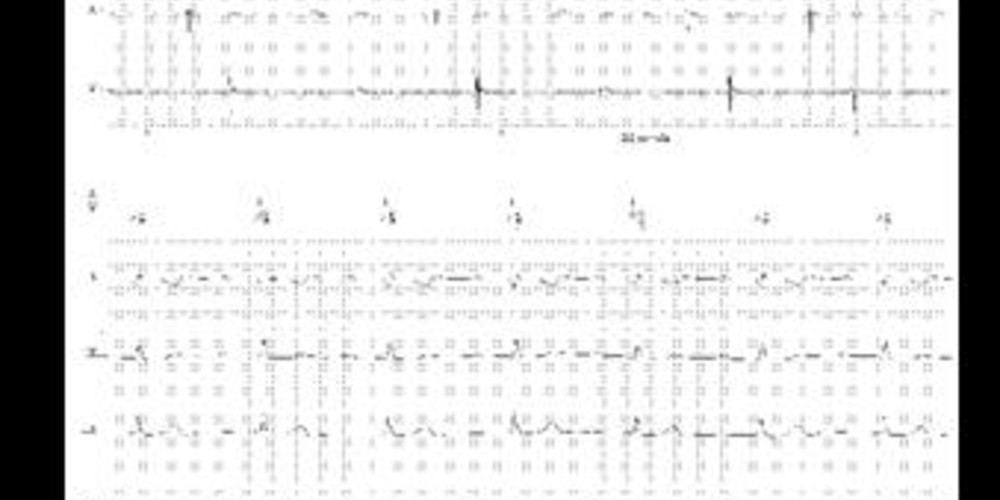Single-chamber VVI mode
Tracing
Manufacturer Biotronik
Device PM
Field Pacing Modes
N° 5
Patient
Same patient as in tracing 1.

Graph and trace
Programming in VVI mode 40 beats/minute;
- spontaneous ventricular sensing and inhibition of ventricular pacing; recycling of the ventricular escape interval on each ventricular sensing; device operating in sentinel mode.
Other articles that may be of interest to you







A single-chamber pacemaker operates in VVI mode when only one lead is positioned in the ventricle; the VVI mode can also be programmed in a dual-chamber pacemaker. Programming of the base rate is essential. Indeed, in patients with sinus dysfunction, if the base rate is too high and above the sinus rate, ventricular pacing becomes permanent with
Conversely, when the minimum pacing rate is below the spontaneous sinus rate (e.g. 40 beats/minute), the patient is not paced when the device is in sentinel mode. This enables: